Alongside advancements in technology, modern design is expanding in its scope and boundaries while evolving to meet consumer needs and lifestyles.
As the fusion of technology and design has given way to innovative products, Herald Corp. is showcasing five tech-savvy creations by Korean start-ups at the Herald Design Tech booth at Dongdaemun Design Plaza in Seoul until Sunday.
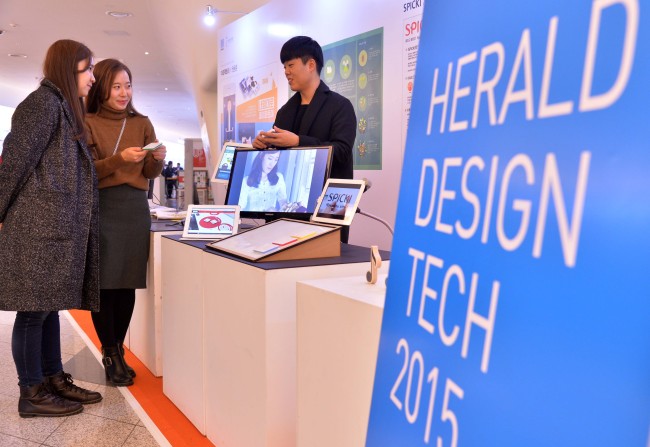
These firms — some of which are led by university students and others by independent engineers and designers — have harnessed technology to create products for use in everyday life.
Spiki — a combination of “speak” and “sticky” — is a thin plastic recording device made to resemble a Post-It note. The device can record and play sounds, and can be stuck on various surfaces, similar to the widely used sticky note.
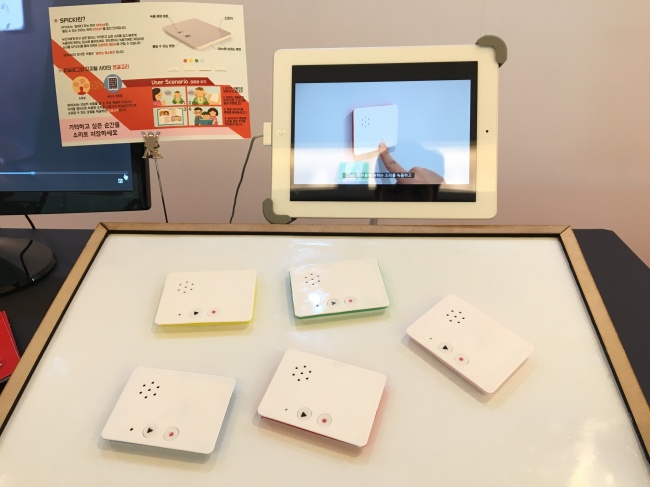
Developed by students studying creative technology management and information and interaction design at Yonsei University, the device is a so-called “speaking Post-It” that combines the analog with the digital.
According to Spiki, the device can be useful for various people — including parents who want to capture precious moments like when a baby speaks his or her first words, musicians who want to immediately record a tune that suddenly pops into mind or note-taking office workers.
Though the plastic device is much thicker than a conventional paper note, it will be possible to approach the thinness of paper upon mass production, according to the company.
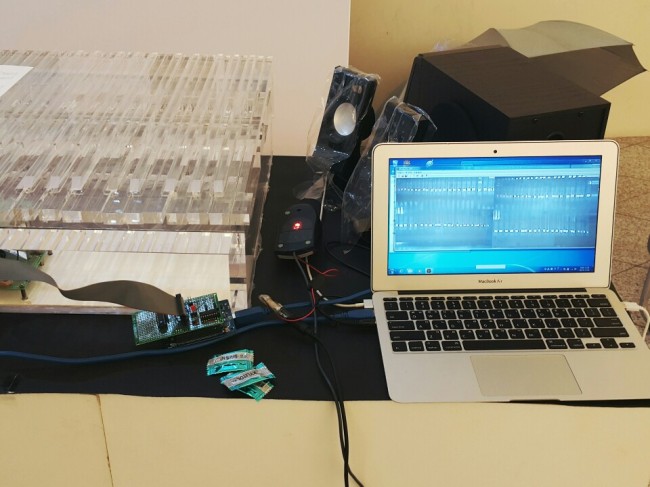
Meanwhile, the Dokdopia, built by engineer Lee Moon-key, is a piano made of clear, acrylic plastic keys. When users tap a piano key, two cameras located under the keys recognize the movements and send the images to a computer. Based on the images, the appropriate sounds are produced via a program developed by Lee.
“Though there is a slight delay between when a user hits a piano key and the sound is made, this gap can be easily mended by using cameras with more advanced movement-recognition functions,” said Lee, who hand-built the product himself.
Following further upgrades and development, Lee is hoping to commercialize the Dokdopia — inspired by the sea surrounding Dokdo Island.
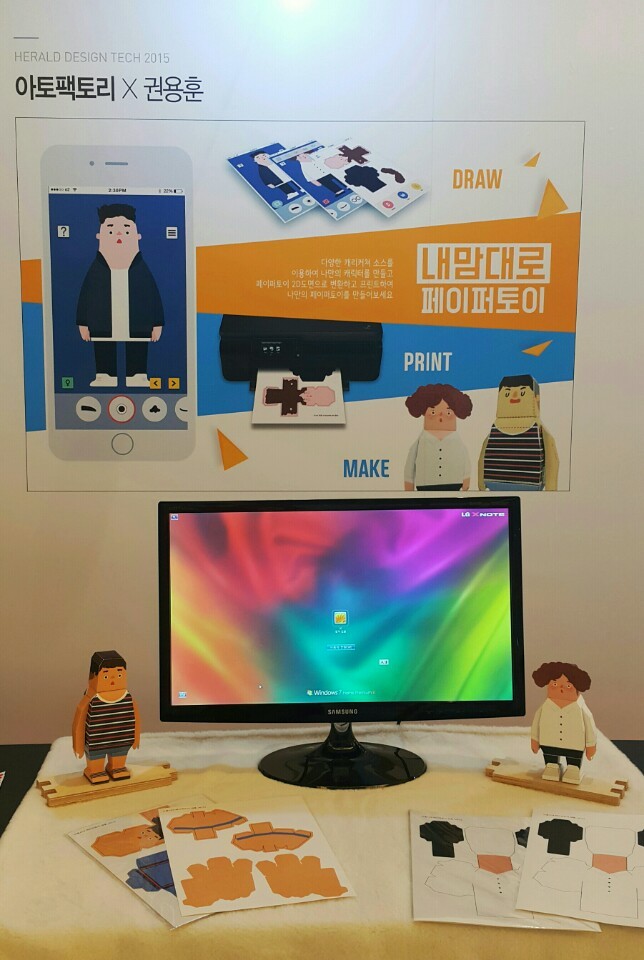
Meanwhile, Ato Factory led by engineer Kwon Yong-hoon has developed a do-it-yourself paper toy printing machine based on different caricatures while Weekend Works led by Park Je-sung has developed the Swing Speaker, which dances in line with the beat of music.
Jojo, led by Yonsei University student Cho Ye-in, has launched a reading promotion app for “people who want to but find it difficult to read regularly.” The app, in its prototype, monitors the user’s reading progress and connects users with e-book stores and other app users.
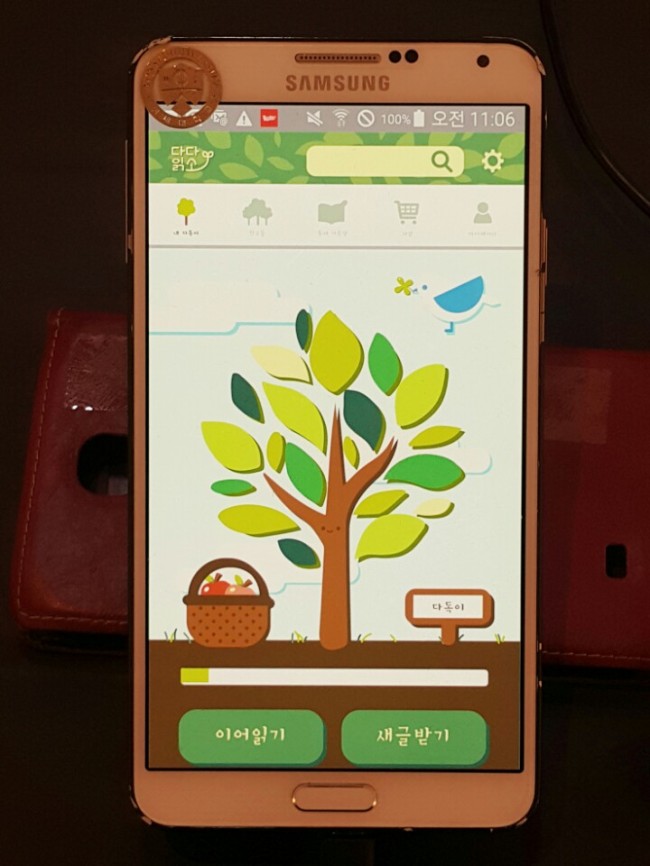
One of the five showcased firms will be awarded with a cash prize and an opportunity to commercialize the product this month, according to organizers.
By Sohn Ji-young (jys@heraldcorp.com)







![[Graphic News] More Koreans say they plan long-distance trips this year](http://res.heraldm.com/phpwas/restmb_idxmake.php?idx=644&simg=/content/image/2024/04/17/20240417050828_0.gif&u=)
![[KH Explains] Hyundai's full hybrid edge to pay off amid slow transition to pure EVs](http://res.heraldm.com/phpwas/restmb_idxmake.php?idx=644&simg=/content/image/2024/04/18/20240418050645_0.jpg&u=20240419100350)





![[From the Scene] Monks, Buddhists hail return of remains of Buddhas](http://res.heraldm.com/phpwas/restmb_idxmake.php?idx=652&simg=/content/image/2024/04/19/20240419050617_0.jpg&u=20240419175937)

![[KH Explains] Hyundai's full hybrid edge to pay off amid slow transition to pure EVs](http://res.heraldm.com/phpwas/restmb_idxmake.php?idx=652&simg=/content/image/2024/04/18/20240418050645_0.jpg&u=20240419100350)

![[Today’s K-pop] Illit drops debut single remix](http://res.heraldm.com/phpwas/restmb_idxmake.php?idx=642&simg=/content/image/2024/04/19/20240419050612_0.jpg&u=)